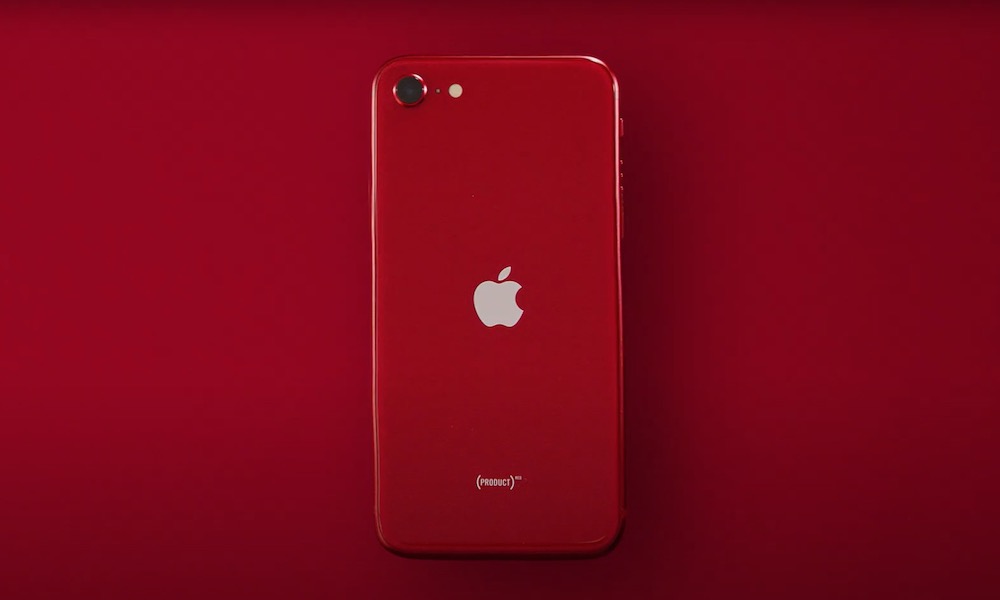Surprise! The iPhone SE Is Actually Cheaper to Repair Than the iPhone 8
 Credit: Apple
Credit: Apple
Toggle Dark Mode
Although the iPhone SE is remarkably similar to the iPhone 8 — from the outside you’d be hard-pressed to tell them apart at a glance — it turns out that the internals are just different enough to make it a bit of a guessing game which parts are interchangeable between the two models, as iFixit recently discovered.
As part of its expected teardown report on the new iPhone SE, iFixit also tried swapping parts between the iPhone 8 and the iPhone SE, and found the results to be surprising in some ways, especially compared to the original iPhone SE from 2016, which built on the legacy of the earlier iPhone 5s.
To be clear, iFixit, which generally focuses on how easy a given device is to repair, did say that “a lot of the same readily available parts from the iPhone 8” can be used to repair it, which in their opinion actually makes it an even better deal than we’ve already noted, since not only are you getting all of the horsepower of an iPhone 11 for only a little over half the price, but it should also be significantly cheaper to repair.
Apple Service Pricing
Even up-front service and repair costs are cheaper than the iPhone 8 that came before it — in fact, Apple-certified repairs are shockingly cheap, going for the same $260 price as the original 2016 iPhone SE and iPhone 5s.
A screen replacement for the iPhone SE costs $129, if you don’t have AppleCare+, which is the same price as for the iPhone 6, original iPhone SE, iPhone 5s, and iPhone 5c. By comparison, replacing the screen on an iPhone 6s, iPhone 7, or iPhone 8 will run you $20 more, likely due to the 3D Touch hardware in those models, and let’s not even talk about how expensive a screen replacement is on the OLED-equipped iPhone X, iPhone XS, and iPhone 11 Pro models, which will run you anywhere from $279 to $329.
That said, these all go down to a mere $29 if you have AppleCare+, at least for the first two screen breaks, but at only $129 for a screen repair, there may be less incentive to buy AppleCare+ for the iPhone SE.
Other out-of-warranty repairs are also remarkably less expensive, with the iPhone SE coming in at $269 for any out-of-warranty problems other than screen damage, which is a full $30 less than the iPhone 6, and $80 less than the iPhone 8.
These prices are all for official Apple repairs, of course, so third-party repairs may be even less expensive, and while your warranty will have you covered for the first year, the fact that you’ll be able to get inexpensive service after that adds to the longevity of the iPhone SE, which also has a processor that’s should keep on performing well into iOS 16 and beyond.
What Parts Can’t Be Swapped?
So for the most part, third-party repair shops will be able to take advantage of a wide array of available service parts, and it seems likely that Apple may also be relying on this advantage (although that wouldn’t explain why iPhone 8 repairs are still considerably more expensive).
That said, however, there are a few parts that can’t be brought over from an iPhone 8. First and foremost is the Touch ID button, which isn’t surprising at all, as it’s never been possible to swap a Touch ID button between even two identical iPhone models due to the pairing process required for security reasons, which can only be done by Apple’s authorized repair shops.
Most other parts can be swapped over, though, as they’re virtually identical, including the cameras, display assembly, and Taptic Engine, but surprisingly, iFixit notes that the battery is actually not interchangeable, even though it looks identical at first glance. Apparently, it has a different logic board connector, so they won’t fit together at all, and of course it has the modern battery lockdown “feature” that Apple recently incorporated which means you won’t be able to swap batteries between two iPhone SE units anyway, at least not without triggering a “not a genuine Apple battery” service warning.
That said, however, Apple and Apple Authorized Service Providers (AASPs) can still tackle Touch ID sensors and batteries, along with other repairs, and considering that Apple has made iPhone SE repairs considerably less expensive than other models, you may not find it nearly as necessary to seek out third-party repair shops.






